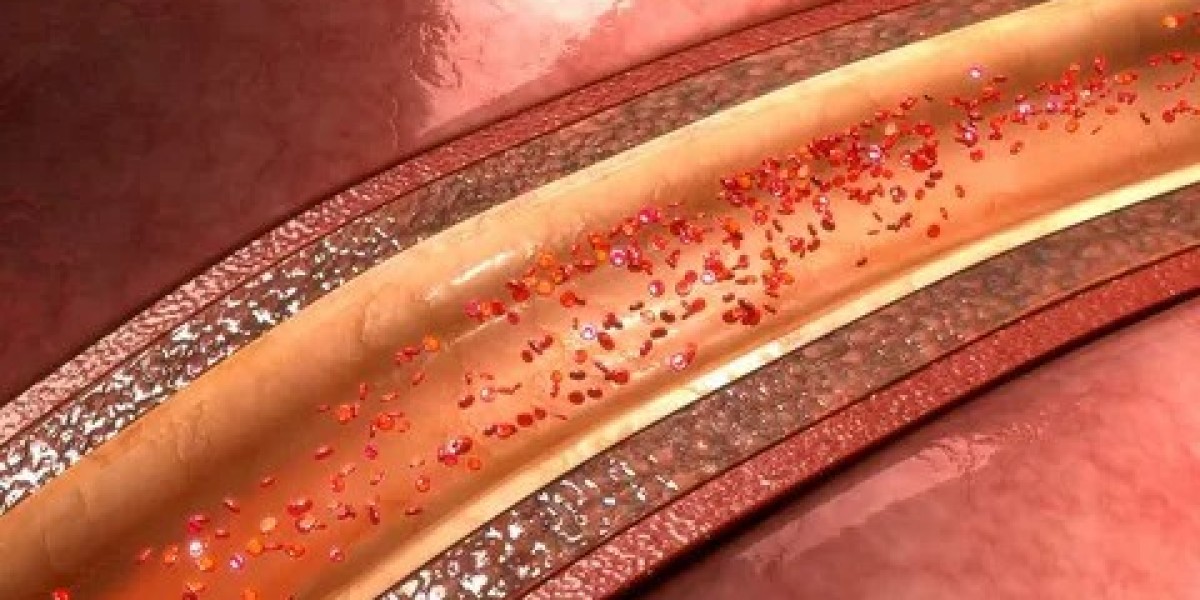Malabsorption syndromes are a group of disorders characterized by the body's inability to absorb nutrients properly from the gastrointestinal tract. This can lead to various health issues, including malnutrition, weight loss, and deficiencies in essential vitamins and minerals. Understanding the underlying causes, identifying the symptoms, and seeking timely treatment are critical to managing these conditions effectively. In this comprehensive guide, we explore the different types of malabsorption syndromes, their causes, symptoms, diagnosis, and available treatments.
What Are Malabsorption Syndromes?
Malabsorption refers to a condition in which the small intestine fails to absorb essential nutrients from food. These nutrients typically include carbohydrates, proteins, fats, vitamins, and minerals. Malabsorption syndromes can be caused by various factors, including diseases, infections, genetic conditions, or structural abnormalities in the intestines. As a result, the body does not receive the nutrients it needs for normal function, leading to weight loss, chronic diarrhea, and nutrient deficiencies.
Types of Malabsorption Syndromes
There are several different types of Malabsorption Syndromes, each with distinct causes and symptoms. The most common include:
1. Celiac Disease
Celiac disease is an autoimmune disorder in which the ingestion of gluten (a protein found in wheat, barley, and rye) triggers an immune response that damages the lining of the small intestine. This damage impairs nutrient absorption and can lead to severe deficiencies, particularly in iron, calcium, and vitamin D. Individuals with celiac disease must follow a strict gluten-free diet to prevent symptoms and complications.
2. Lactose Intolerance
Lactose intolerance occurs when the body is unable to properly digest lactose, a sugar found in milk and dairy products. This is caused by a deficiency of lactase, the enzyme responsible for breaking down lactose in the small intestine. Symptoms of lactose intolerance include bloating, gas, diarrhea, and abdominal cramps.
3. Tropical Sprue
Tropical sprue is a malabsorption disorder commonly found in tropical regions, particularly in Southeast Asia and parts of Africa. It is thought to be caused by a bacterial or viral infection that damages the small intestine's villi, impairing nutrient absorption. Individuals with tropical sprue often experience chronic diarrhea, weight loss, and vitamin deficiencies.
4. Short Bowel Syndrome
Short bowel syndrome (SBS) occurs when a significant portion of the small intestine is surgically removed, often due to trauma, Crohn’s disease, or intestinal cancer. With less surface area available for nutrient absorption, individuals with SBS may experience severe malabsorption, requiring long-term nutritional support through enteral feeding or parenteral nutrition.
5. Chronic Pancreatitis
Chronic pancreatitis involves long-term inflammation of the pancreas, which impairs its ability to produce digestive enzymes. Without sufficient enzymes, the body struggles to digest fats, proteins, and carbohydrates, leading to malabsorption. Patients with chronic pancreatitis often require enzyme replacement therapy to aid digestion.
Causes of Malabsorption Syndromes
Malabsorption syndromes can have a variety of causes, depending on the type of disorder. The most common causes include:
- Infections: Bacterial, viral, or parasitic infections can damage the intestinal lining, leading to impaired nutrient absorption.
- Enzyme Deficiencies: Some conditions, such as lactose intolerance or pancreatic insufficiency, result from the lack of specific enzymes needed for proper digestion.
- Inflammation or Damage to the Intestine: Conditions like Crohn’s disease or ulcerative colitis can cause chronic inflammation and damage to the small intestine, affecting nutrient absorption.
- Genetic Factors: Some malabsorption syndromes, like celiac disease, are inherited and result from genetic mutations.
- Surgical Removal of Intestinal Tissue: Removal of a large portion of the small intestine due to surgery or disease can lead to malabsorption.
- Other Diseases: Conditions such as HIV/AIDS, liver disease, and gastric bypass surgery can also contribute to malabsorption.
Symptoms of Malabsorption Syndromes
The symptoms of malabsorption syndromes vary depending on the underlying cause but commonly include:
- Chronic Diarrhea: Frequent, watery stools are a hallmark symptom of malabsorption.
- Weight Loss: Despite a normal or increased appetite, individuals with malabsorption may experience unintended weight loss.
- Nutrient Deficiencies: Common deficiencies include iron, folate, calcium, and vitamin B12, leading to symptoms such as anemia, bone pain, and fatigue.
- Abdominal Discomfort: Bloating, gas, cramping, and nausea are common in many malabsorption syndromes.
- Steatorrhea: The presence of fatty stools, which are pale, foul-smelling, and float in water, is a specific sign of fat malabsorption.
Diagnosing Malabsorption Syndromes
The diagnosis of malabsorption syndromes typically involves a combination of clinical evaluation, laboratory tests, imaging studies, and sometimes biopsy procedures. Common diagnostic approaches include:
1. Stool Tests
A stool test is used to assess the presence of fat or undigested food particles, indicating malabsorption.
2. Blood Tests
Blood tests can help identify deficiencies in essential nutrients such as iron, vitamin B12, folate, and calcium, which are common in malabsorption syndromes. Additionally, blood tests can detect the presence of celiac antibodies or lactose intolerance.
3. Endoscopy and Biopsy
An endoscopy, often combined with a biopsy, may be used to examine the small intestine for signs of damage or inflammation. This is particularly helpful in diagnosing conditions like celiac disease and Crohn's disease.
4. Imaging Studies
Imaging studies, such as CT scans or MRI, may be used to assess the size and structure of the small intestine, especially in cases of short bowel syndrome or pancreatic insufficiency.
Managing Malabsorption Syndromes
Treatment for malabsorption syndromes depends on the underlying cause and may include dietary changes, medications, and nutritional support. Some common approaches include:
1. Dietary Modifications
A gluten-free diet for individuals with celiac disease, a lactose-free diet for those with lactose intolerance, and a low-fat diet for those with pancreatic insufficiency are essential to manage malabsorption. These dietary changes help reduce symptoms and prevent further nutrient deficiencies.
2. Enzyme Replacement Therapy
For individuals with pancreatic insufficiency or lactose intolerance, enzyme replacement therapies may be recommended to aid in digestion and nutrient absorption.
3. Vitamin and Mineral Supplements
Individuals with malabsorption may require supplements to address iron deficiency, calcium deficiency, vitamin D, and vitamin B12 deficiencies. These supplements can help alleviate symptoms and prevent complications.
4. Nutritional Support
In severe cases of malabsorption, enteral nutrition (tube feeding) or parenteral nutrition (intravenous feeding) may be necessary to ensure adequate nutrition.
Conclusion
Malabsorption syndromes are diverse and can lead to a range of health problems. Early diagnosis, effective treatment, and adherence to dietary modifications are critical for managing these conditions and improving the quality of life for affected individuals. Whether caused by autoimmune disorders, infections, enzyme deficiencies, or structural abnormalities, understanding malabsorption syndromes and their management is key to maintaining good health.










